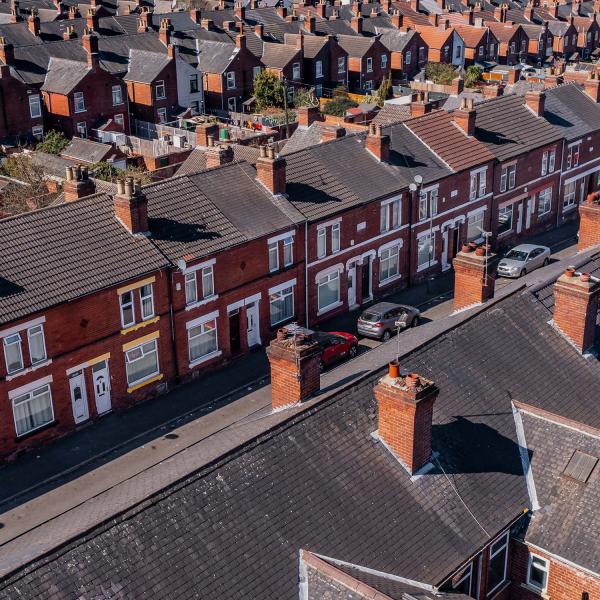Three cheers for the statisticians at the Department for Education. They have used the fruitless attempts of their political masters to justify new grammar schools and to distinguish “ordinary working families” from the rest of us to achieve something rather remarkable. In so doing they have genuinely added to the sum of human knowledge, pushed the frontiers of big data and demonstrated to their often recalcitrant colleagues and political masters across Whitehall what is actually possible.
For these statisticians were set a task to define “ordinary working families” and to look at how well the children in these near-mythical entities were doing in the school system. Not just that, they needed to look at how well these children were doing relative to children in out-of-the-ordinary families, those too rich or too poor to be considered merely ordinary. And they turned this frankly silly question to very good use indeed.
They decided that an ordinary working family was one with an income low enough to be below the median income but not so low as to be eligible for the pupil premium. The pupil premium is an additional amount paid to schools in respect of children from poor (as opposed to ordinary) families. Poor families are in turn defined as those who have had eligibility for free school meals at some point in the past six years, that is to say those who have spent some time out of work and on means-tested benefits. To give a sense of scale, nearly 30 per cent of children are in this category.
What is exciting about that question, and the way our heroic statisticians answered it, is that we have never before had a direct link between data on parental income and data on children’s attainment for the population of English children in state schools. And now we do, or at least the department does. They did it by, for the first time, matching data collected on the exam results of all schoolchildren with child benefit and income tax records.
Now I appreciate that few readers will be quite as excited as I am by this feat of data linkage, but please bear with me. Results from this exercise were published last week in the rather unpromising form of a “technical consultation document”. And the results are really rather revealing.
It is no surprise to see that children from higher-income households do better at every stage of the school system than their poorer contemporaries. However, the new data tells us much more than just that.
First, this pattern holds right across the income distribution. As you move up each and every income bracket from bottom to top, pass rates and grades rise. This is not all about a difference between the poorest and the rest, or the average and the elite. As incomes rise, grades rise. Before going further let me just say that this is emphatically not the same as saying that if you give someone some extra money their children will do better in school. It helps, but simply being well off doesn’t make you a good parent, you actually have to do stuff.
Second, though, there really is a striking difference between outcomes for those eligible for the pupil premium and our group of ordinary people. Those on merely low or just average incomes do much better than the pupil premium group. There is a big difference between being “ordinary” and being “poor”. Children from poor families do about a grade per subject worse at GCSE than do those from working families. The poor, pupil premium group also look very different in one other respect — their parents most commonly had their first child when they were in their early twenties, a full decade younger than for other groups. These statistics are reassuring for politicians who, during the past many years, have focused extra resources on schools with lots of children entitled to free school meals. This is the group which is struggling most and needs by far the most help.
Third, while the relationship between income and school performance is relatively modest across much of the income distribution beyond the poorest, there is one other jump in performance, and that’s right at the top. Once you get into the top 10 per cent of household income results really start to take off, and remember that we are looking at state schools only here. This confirms what we know about, for example, university entry where there is a chasm in performance between the very top social class and the rest, particularly when it comes to getting into Russell Group institutions.
All of this, by the way, is also true of entry to grammar schools in selective areas. To quote directly from last week’s Department for Education publication, “for grammar schools, the key differences are again amongst disadvantaged children and those from families with above median incomes. Here the variation is at its largest, with less than one in ten pupils in selective schools from disadvantaged backgrounds and over half from the most affluent group.”
All of which confirms two things. It’s the poorest pupils, those qualifying for the pupil premium, that we should be most worried about. And if we are to focus on “ordinary working families” that’s pretty much everyone else outside higher professional classes.
Finally, another shout out for the government statisticians. I might write another time about the scandal of the huge costs imposed on all of us by the political and bureaucratic failure of much of Whitehall to allow any access to, or analysis of, much of the data they hold.
However, here we have a real achievement, one with the potential to add much more to our understanding of what works in the school system.
This article was first published in The Times and is reproduced here in full with permission. Paul Johnson is director of the Institute for Fiscal Studies. Follow him on @PJTheEconomist








